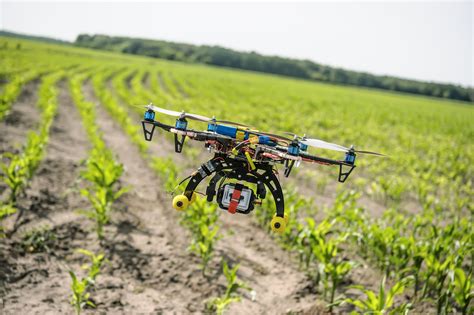The agriculture sector is continuously evolving, and the latest entrant shaking things up is the crop-spraying drone. While traditional tractors and crop-dusting aircraft have long been the backbone of modern farming, new technology promises to further automate and refine these processes. With evolving innovations such as AI and deep learning, drones are now being promoted as the next big thing in agriculture. However, the journey to get farmers to adopt these technologies is far from straightforward. Not only does it require changing entrenched habits and perceptions, but it also involves convincing them of the new technologies’ return on investment.
One of the primary points of contention is the target market for these drones. Many assume that drones would replace tractors. However, their primary competition lies with piloted crop-dusting aircraft. Traditional crop-dusting has been known to be an inherently risky job, with pilots navigating old, often poorly maintained aircraft. The danger is ever-present, from low-altitude flights over uneven terrain to the risk of colliding with unseen obstacles like power lines. By contrast, drones operate autonomously, can be programmed to avoid obstacles, and potentially offer a safer, more efficient alternative for crop-spraying. The main challenge lies in scaling up battery life and payload capacity to match those of traditional aircraft.
The integration of AI and machine learning further enriches the value proposition of drones. While it might seem far-fetched, AI is already making waves in agriculture. For instance, a cucumber farmer in Japan uses deep learning and TensorFlow to sort and pack cucumbers, a feat that showcases the future possibilities. Autonomous ground robots are also in development, capable of navigating fields, identifying and removing weeds, and administering targeted herbicide applications, thus reducing the need for widespread chemical use and its associated environmental impact.
The ability to reduce herbicide use is a significant win in favor of drones and autonomous systems. A major benefit is the potential environmental impact reduction. Traditional agricultural practices involve heavy chemical use, which can have downstream effects on soil health and surrounding ecosystems. Autonomous drones and robots, with their precision-targeting capabilities, can dramatically cut down on excess herbicides and pesticides, focusing only on problem areas rather than broadcasting chemicals across entire fields. This method not only ensures more effective pest control but also enhances crop health in the long run.
Critics argue that the high cost of developing and deploying such technology may not justify the transition from traditional methods. The ROI for any new technology must be compelling enough for farmers to consider it. For smaller farms, in particular, the initial investment in high-tech farming equipment like drones can be prohibitive. There’s also the concern of operational complexity—maintaining drones, ensuring they are adequately charged, and complying with regulations can add layers of difficulty compared to simply using a tractor or hiring a crop-dusting service. Moreover, drones currently have limitations, including shorter battery life and lower payload capacities, which diminish their suitability for large-scale operations.
The regulatory landscape is another critical factor affecting the adoption of drone technology in agriculture. In many regions, the legal framework for commercial drone use is still evolving. For instance, drones used for agricultural purposes might need special clearances, and operations often have to be within the visual line of sight of the operator. The necessity for spotters and adherence to strict airspace regulations can be cumbersome. Regulatory shifts are inevitable, but they require significant lobbying by commercial interests to ensure progress, as seen in other industries.
In conclusion, the conversation around drones in agriculture is multifaceted. On one hand, they promise to revolutionize how farming is done, offering safety, precision, and efficiency benefits. On the other, existing technology like tractors and piloted crop-dusting aircraft are deeply ingrained in the agricultural tradition and come with proven reliability and effectiveness. It’s clear that drones are not a one-size-fits-all solution; their adoption will depend heavily on the type of farming operation, the crop in question, and the farmer’s willingness to embrace new technology. One thing is certain: as the technology matures, it will continue to redefine the possibilities in agriculture, potentially creating a more sustainable and efficient industry.
The conversation surrounding drones in agriculture is ongoing and multi-dimensional. While the tech enthusiasts see endless possibilities with AI, drones, and autonomous systems, practicalities like cost, regulation, and actual need shape the ground realities. It’s incumbent upon the technology developers to work closely with farmers, understand their pain points, and tailor solutions that offer tangible benefits. Like any industry undergoing digital transformation, farming too will have its trailblazers and its skeptics, but the eventual winner will be the one that adapts to serve the field’s unique demands effectively.


Leave a Reply